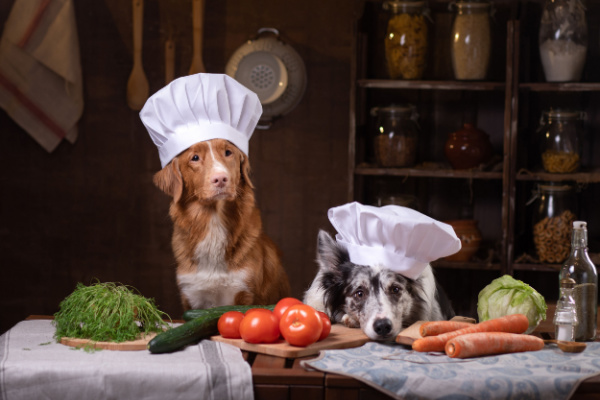You want what’s best for your pet. With so much information about veterinary nutrition in advertisements, on the internet, in your inbox and on social media, it’s hard to know what’s accurate or what’s a marketing ploy. To help you make informed choices, VCA Animal Hospitals have broken down the myths and present the facts about pet food nutrition.
Myth #1: Foods with “byproduct” ingredients are poor quality.
Byproducts are simply what’s left over after the intended, or primary, product has been made. For example, the processing of soybeans creates the byproduct vitamin E, chicken fat is a byproduct of the chicken industry and beef bouillon and gelatin are byproducts of the beef industry. In the case of pet foods, byproducts are often excess materials left over after processing human foods, many of which are human grade (e.g., liver, tripe, spleen). The fact is, byproducts are a highly digestible source of many different nutrients. Using animal and plant byproducts is ecologically responsible, since the use of byproducts in animal feed decreases land waste, the release of nitrogen into the atmosphere and the total number of sacrificed animals.
Myth #2: Foods labeled as “all-natural” or “holistic” are better for your pet.
The term “all-natural” can mean different things to different people. To one person it could mean foods typically consumed by wolves in the wild, but to someone else it may mean fresh and unprocessed foods. Many of the words used to describe pet foods have no legal definition and manufacturers can use these terms regardless of the quality of the ingredients. While the term “natural” does have a legal definition according to the Association of American Feed Control Officials (AAFCO), the definition is so broad (including plant, animal and mined ingredients), that it’s virtually meaningless. Nutritionally speaking there is nothing that distinguishes “all-natural” pet food from any other food.
Myth #3: Raw diets are best because they’re closer to the diet that wolves eat in the wild.
There are many risks with raw diets and research doesn’t show any advantage. Hazards include potential nutritional deficiencies leading to health issues and contamination with bacteria and parasites. Most raw foods consist of meats, ground bone, raw eggs, fruits or vegetables and dairy products. Because of these raw ingredients, there’s the concern of potential contamination of bacteria, such as E. coli, Salmonella, Listeria and others. Children, the elderly, pregnant people, and immunocompromised individuals are at risk of serious illness from these bacteria. Because pets can shed the bacteria in their saliva, contamination can occur from the pet, from the food dish or the food itself.
Myth #4: Homemade diets are healthier and more nutritious than commercial pet food.
Linoleic acid, vitamin K, magnesium and phosphorus. Do you know which food ingredients contain these nutrients? Most people don’t and don’t know the proportions that their pet needs. A healthy diet must be complete and nutritionally balanced, and nutrients need to be easily absorbed by the body. If the nutrients aren’t delivered in the proper proportions, they may not be absorbed by your pet. Homemade diets are often not nutritionally complete and balanced. Commercially prepared pet foods produced by manufacturers that follow the Global Veterinary Guidelines produced by the World Small Animal Veterinary Association incorporate all the essential nutrients in the correct proportions that you pet needs. If you plan to feed your pet a homemade diet, consult with a board-certified veterinary nutritionist to develop a recipe that meet your pet’s unique needs.
Myth #5: You can tell the quality of the pet food from the ingredient list.
Ingredients alone don’t tell the whole story. If ingredients aren’t delivered to your pet in the right proportions, they can’t be used or absorbed by the body correctly. Reading a label doesn’t give you much information about the quality or quantity of ingredients. Even a trained nutritionist can’t collect much useful information just by reading a pet food label.
So where to start? Watch the AskVCA video on how to read pet nutrition labels. When in doubt, ask your veterinarian for advice. They can help decipher the information and recommend foods that are ideal for your pet’s life stage and overall health condition.
Your veterinarian knows a lot about pet nutrition, and they also have access to the latest scientific research on pet nutrition. They understand that you want the best for your pet and can answer your questions about pet nutrition!
—
Photo Credit: dezy / Shutterstock.com
